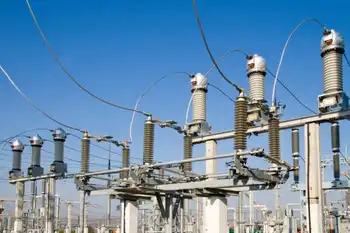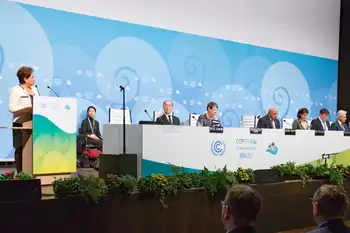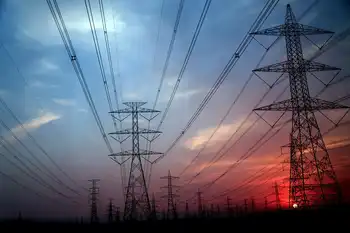Ignatieff's unexcellent rail and power adventure
By Globe and Mail
Protective Relay Training - Basic
Our customized live online or in‑person group training can be delivered to your staff at your location.

- Live Online
- 12 hours Instructor-led
- Group Training Available
As such, Mr. Ignatieff's True Patriot Love starts out by dismissing his late uncle George Grant's disgust at Canada's capitulation before the altar of continental economic integration as the stodgy nostalgia of a 1960s conservative, but then ends up concluding his own book on a strikingly similar note.
Canada "wouldn't exist at all if the logic of money had determined our destiny. We'd be Americans," the federal Liberal Leader writes. "What exactly is being Canadian worth to us in dollars and cents? How much are we prepared to invest to keep our country in one piece?" True Patriot Love sure asks a lot of big questions. Too bad it doesn't answer any of them. In the end, Mr. Ignatieff is more of a pencil-pushing politician than he cares to admit.
Mr. Ignatieff pines for modern high-speed rail links to stitch the country together and an east-west electricity transmission grid to staunch the southward flow of our power. Just don't ask him for a commitment to build them if he becomes prime minister.
Mr. Ignatieff is apparently no Felipe Gonzalez. As Spain's prime minister between 1982 and 1996, Mr. Gonzalez put his country on a fast track to become the world's biggest high-speed rail leader. To Spaniards, the €100-billion ($161-billion) Alta Velocidad Espanola (AVE) is either a financial sinkhole or the secret to national unity in a country with regional tensions that would shock even a Canadian.
When Catalans from Barcelona (Spain's Montreal) can make it to Madrid (its Toronto, and the city Barcelonians love to hate) in 2.5 hours, compared to six hours by car, a lot of them are bound to take advantage it.
The problem is, airlines have lost half of their Madrid-Barcelona traffic since the high-speed rail line opened a year ago. What would a similar link between Toronto, Ottawa and Montreal do to Air Canada, WestJet and Porter? Is Mr. Ignatieff prepared to bail them out, in addition to putting billions into an eternally unprofitable high-speed rail line?
Mr. Ignatieff's musings on an east-west electricity grid are even harder to fathom. Current interconnections between most provinces are already underutilized. We are net exporters of electricity to the United States because most provinces, including supposedly energy-strapped Ontario, have surpluses for which there are no buyers in Canada.
Ontario's Independent Electricity System Operator (IESO) forecast last month that 4,700 megawatts of additional power will be added to the province's grid by next year as new gas-fired and refurbished nuclear supply comes on stream.
In the past, Ontario typically faced peak demand of 27,000 megawatts. But the recession has laid waste to that. Demand for power is falling so fast that Ontario electricity producers recently had to pay the grid to take their surpluses, since it would have been even more costly for them to temporarily shut down nuclear capacity.
Ontario Premier Dalton McGuinty and his Quebec counterpart Jean Charest signed a memorandum of understanding last year that was hailed as the beginning of a new era of interprovincial electricity trading. It was all optics. A new 1,250-megawatt interconnection between the two provinces will be fully operational by next year. Just don't expect it to change much.
Ontario has given no indication to Quebec that it's interested in negotiating a long-term power purchase agreement. So the new line will be used on a "spot" basis: Hydro-Québec will sell power to Ontario occasionally during peak hours on summer days, and import electricity in non-peak periods in order to "stock" energy (by letting water build up in its reservoirs). Quebec will also use the line (brace for it, Mr. Ignatieff) to "wheel" power through Ontario to buyers in the U.S. Midwest.
Mr. Ignatieff's east-west grid would be needed if Ontario chose to forgo plans to build two new nuclear reactors (at a cost of at least $30-billion) to replace coal-fired capacity it promises to close by 2014. It could instead do deals with Quebec, Manitoba and Newfoundland to import power from existing or proposed hydro stations.
Ontario has shown little interest in the idea. The desire for electricity independence and the expected economic benefits that come with ensuring that the province remains at the forefront of nuclear energy are doubtless factors in its calculation.
Besides, the construction of long-distance transmission lines from the hypothetical Conawapa Dam in northern Manitoba or the hypothetical lower Churchill River project in Labrador would likely require substantial federal subsidies. But such aid could subject Canadian utilities to trade sanctions if they subsequently tried to sell surplus power south of the border.
Maybe this is what Mr. Ignatieff means by the "dollars and cents" of staying Canadian.











